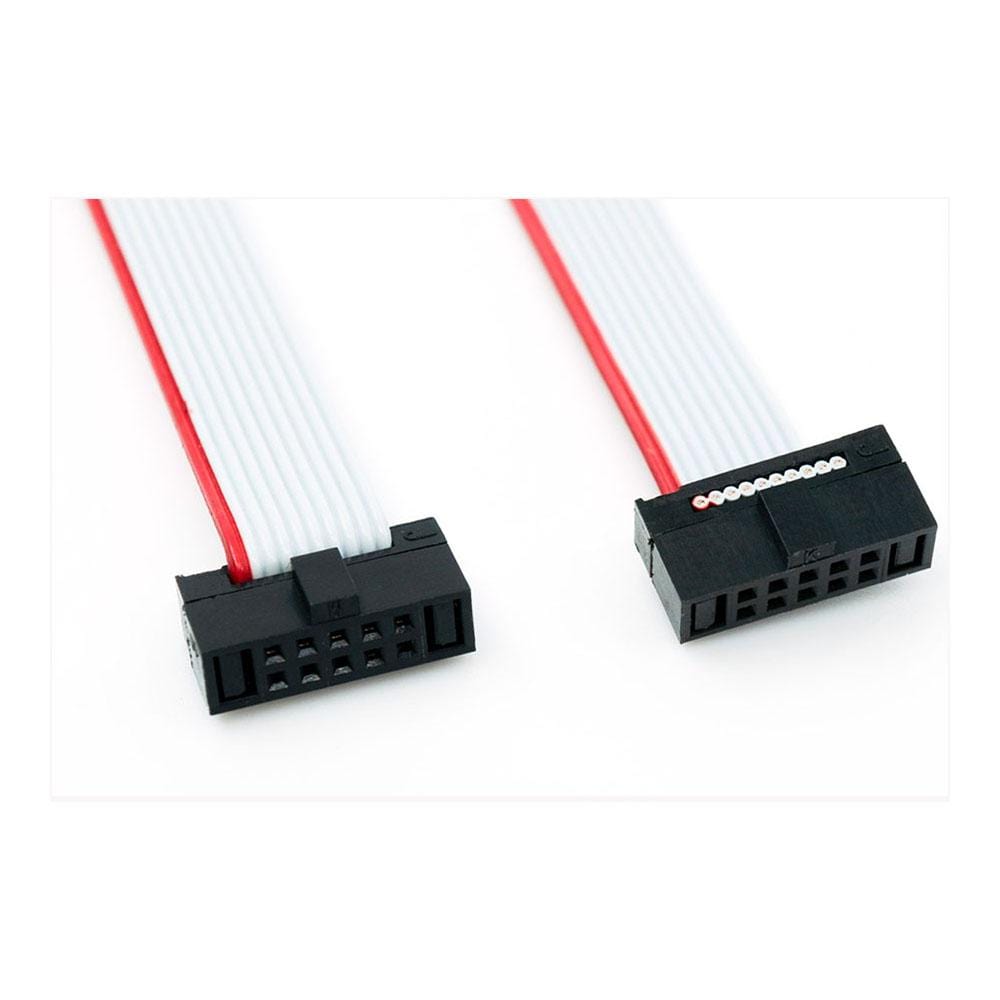
Key Features
Overview
The Tag Connect Reversed 10-pin Cortex Ribbon Cable -LEMTA addresses the unique requirements of Atmel ICE users who need reliable connectivity to ARM Cortex-based targets. Unlike standard cables, this version features reversed pin mapping to compensate for Atmel ICE's non-standard connector orientation, preventing signal conflicts and ensuring proper debugging functionality.
The cable utilises 50mil (1.27mm) pitch connectors compatible with FTSH-105-01 style headers commonly found on ARM development boards. Its 4-inch length provides optimal signal integrity while maintaining workspace flexibility. Engineers working with ARM Cortex-M, Cortex-R, and Cortex-A processors will find this cable essential for professional debugging workflows.
Related products: Tag Connect TC2030-CTX ARM Cortex Cable, TC2050-IDC-050 Debug Cable, and Atmel ICE Debugger.
Downloads
Why Engineers Choose The Umgekehrtes 10-poliges Cortex-Flachbandkabel mit Tag Connect -LEMTA
Atmel ICE Essential
Professional Reliability
Time-Saving Setup
Verbindet ARM Cortex-Programmierer und -Debugger (wie etwa ULINK und Black Sphere) mit einem Ziel mit einem 10-poligen 50mil FTSH-Header.
Bei dieser Version (LEMTA) ist das Kabel umgekehrt und sie ist für die Verwendung mit dem Atmel ICE vorgesehen.
| General Information | |
|---|---|
Part Number (SKU) |
CORTEXRIBBON10-L
|
Manufacturer |
|
| Physical and Mechanical | |
Weight |
0.1 kg
|
| Other | |
Warranty |
|
HS Code Customs Tariff code
|
|
EAN |
5055383644131
|
Frequently Asked Questions
Have a Question?
-
What's the maximum programming speed supported?
The cable supports speeds up to 50MHz for JTAG/SWD protocols, matching the capabilities of modern ARM Cortex debuggers. Actual speed depends on your debugger and target board design.
-
Can this cable handle trace data output?
Yes, pin 6 supports SWO (Serial Wire Output) for trace data when using SWD mode. This enables real-time trace capabilities for performance analysis and debugging.
-
What happens if I use a standard cable with Atmel ICE?
Using a standard cable would reverse all signals, potentially shorting power lines and causing permanent damage to both the debugger and target board. Always use LEMTA cables with Atmel ICE.
-
Does this cable provide power to the target board?
No, this is a signal cable only. Pin 1 (VTRef) is used as a voltage reference for the debugger's level shifters, not for powering the target. Your target board needs separate power.
-
Is the 4-inch cable length sufficient for most applications?
Yes, the 4-inch length balances signal integrity with workspace flexibility. Longer cables can introduce signal degradation, especially for high-speed debugging protocols.
-
What does the 50mil pitch specification mean?
50mil refers to the 1.27mm spacing between pins on the connector. This matches the FTSH-105-01 style headers commonly used on ARM development boards and ensures proper physical fit.
-
What's the difference between SWD and JTAG on this cable?
SWD uses 2 wires (SWDIO, SWCLK) for debugging and is more common on Cortex-M devices. JTAG uses 4 wires (TDI, TDO, TMS, TCK) and supports boundary scan testing. This cable supports both protocols.
-
Can I use this cable with debuggers other than Atmel ICE?
While designed for Atmel ICE, this cable works with any debugger that requires the LEMTA reversed configuration. However, standard orientation debuggers like J-Link require regular orientation cables.
-
Which ARM processors are supported by this cable?
This cable supports all ARM Cortex-M, Cortex-R, and Cortex-A processors that use the standard 10-pin debug interface, including STM32, SAM, Kinetis, and LPC series microcontrollers.
-
What makes this cable different from standard ARM Cortex cables?
The LEMTA version features reversed pin mapping specifically for Atmel ICE compatibility. Standard cables would create signal conflicts due to Atmel ICE's non-standard pin numbering where pin 1 is located at the pin 10 position.

